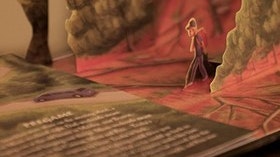Homepage
•
Learning Library
•
Blog
•
5 things students learn from 3D storytelling
Expand breadcrumbs
Expand breadcrumbs
- Learning Library
- Blog
- 5 things students learn from 3D storytelling
- Homepage
- •
- Learning Library
- •
- Blog
- •
- 5 things students learn from 3D storytelling
5 things students learn from 3D storytelling
By Jennifer Latimer
June 5, 2014








